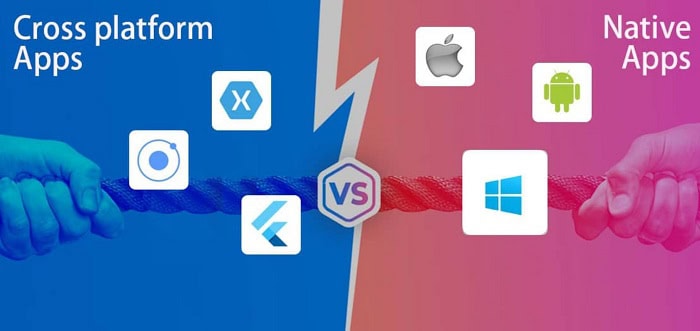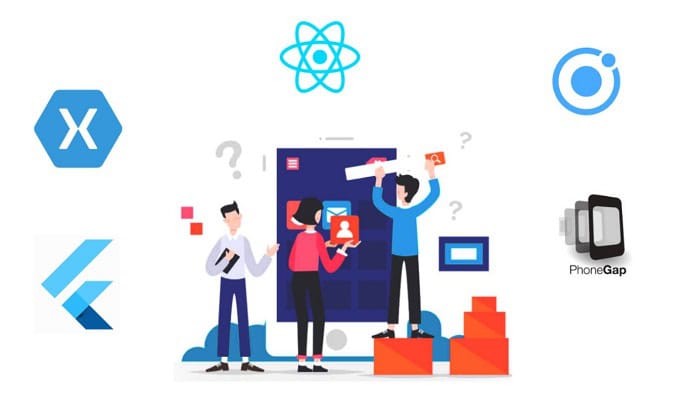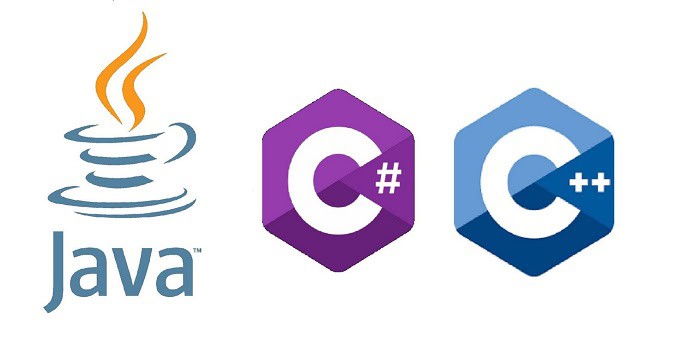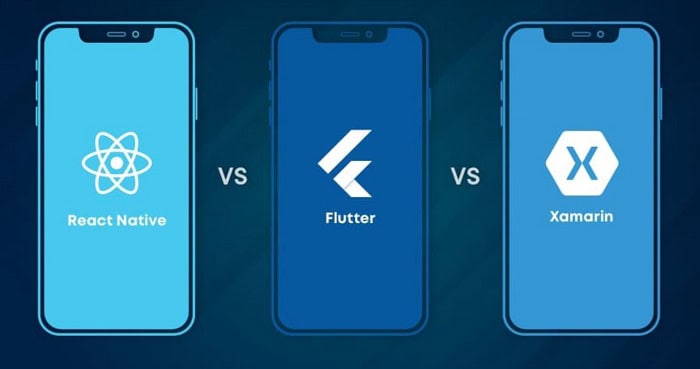The popularity of mobile applications continues to rise with each passing year. Increased growth calls for using mobile app development partnership with newer and more modern software development tools. Cross-Platform App Development tools, which many consider the holy grail of software development, allow developers to build a codebase only once.
It saves time as one doesn’t have to build natively for every platform. But testing it on every platform is a must; a good desktop app testing company like Stormotion certainly helps you with that.
Below, we have briefly used simple words to overview the cross-platform app development process.
Table of Contents
The Difference Between Native and Cross-Platform App Development
For years, the tech community has been involved in a never-ending debate on native vs. cross-platform development.
Some experts prefer native applications over cross-platform ones. However, more companies are looking into developing cross-platform apps to help enhance user experience.
Others, such as Uber, are doing so as a way of rewriting the existing apps.
The one thing both platforms share is their ever-evolving nature. It indicates a need to revisit both topics occasionally to understand which option is winning.

In the case of native app development, the platform focuses on creating a capable design that sticks to the attributes of the intended target platform, i.e., iOS, Android, etc.
On the other hand, cross-platform development is focused on creating an application that can reach as many followers as possible. It seeks to use the creation and programming processes to cover as many end devices as possible.
| Parameter | Native Apps | Cross-Platform Apps |
| Performance | It guarantees seamless performance considering the app is developed for a given OS. | Excellent performance, but it tends to experience hardware compatibility issues. Lags are not uncommon. |
| Device Access | Platform SDK guarantees access to devise API | There’s no guaranteed access to all the device APIs |
| Code Usability | The code only works for one platform | Developers can use one code on numerous platforms ensuring easy portability |
| UI Consistency | Consistent with the user interface components of the target device | Limiter or restricted consistency with the user interface components of the target device. |
| Cost | High cost of software development | Relatively low/affordable cost of software development |
Challenges in Cross-Platform App Development Process
Although there are many benefits to cross-platform app development, it also comes with several challenges. These challenges include:
Limited Tool Support in a Framework
Developers should only build cross-platform apps if they already know the features they intend to include in the project.
Most developers prefer to use TypeScript, Java, and Ruby on Rails when building cross-platform apps. But these languages aren’t always ideal! Many organizations may not have access to the tools needed to customize the apps. Aside from this, they must ensure that the development framework can easily handle the said features.
Lower Performance
High performance is one of the most sought-after attributes of any app. While performance often depends on many factors, native apps perform better.
A cross-platform app may have the same functionalities as its native companion but still perform poorly. The good news is that performance differences are minimal, mainly when dealing with smaller applications.
Code Loss During Platform Migration
A cross-development framework is the most efficient option when building any cross-platform app. The platform will tie you into the project similarly to site builders.
What do we mean? It means the framework will allow you to create usable content but will make it impossible for you to use the content on another framework.

Developers, therefore, need to think of the bigger picture when choosing a framework. Their efforts may get lost if they decide to migrate to another framework.
Poor UX/UI
As surprising as this may sound, the reality is that most cross-platform apps fail because of the hard-to-navigate designs and the inclusion of unnecessary features.
Native apps are built on the premise of a beautiful blend of graphics, 3D effects, and eye-catching animation effects enhanced by device hardware features.
Unfortunately, cross-platform apps cannot take advantage of the functionality mobile devices offer, leading to a poor user experience. Each mobile device has a unique attribute. Hence, developers can’t use a single code to provide the same functionality to all users.
Developers are thus forced to simplify features to assure image and screen layout consistency across multiple devices.
Poor Customization and Navigation Integration
No single development framework can provide support for all the features you will need during code development, e.g.,
- Options connected to hardware functionality
- Inbuilt storage access
- Integration with the device’s local settings
A lack of access to essential features could block the app’s operations.
Pros and Cons of Cross-Platform App Development
Here are some pros and cons to help you understand better
Pros
1. Reusable Code
Developers don’t need to write unique codes for all platforms. They only need to write and customize a single code for all other desired platforms. Therefore, using the code in bits for other projects is possible.
2. Faster Development
The cross-platform app development technique allows developers to eliminate the need to rewrite code from the ground up every time they create an app.
It allows them to reuse the codebase, speeding up the development process. The process leads to faster delivery times compared to native development.
3. Reduced App Development Costs
One of the primary reasons some businesses are yet to invest in app development is the high cost. Luckily, cross-platform app development is affordable, allowing brands to get mobile apps without investing too much into their development.
Cons
1. Integration Problems
Developers have difficulty integrating their apps with local notifications, preferences, and settings. You may need to use third-party cloud services for storage purposes.
2. Poor UI and UX Design
Poor UX/UI design is the most significant disadvantage of cross-platform app development. Using a single codebase and insufficient access to inbuilt features means the user experience will be poor. Native apps are better focused on UX and UI designs.
Languages Used in Cross-Platform Development
The following is a look at the most popular cross-platform languages to help simplify your decision-making journey:
Java
It’s a programming language that’s both simple and powerful. Java has a large community and offers a broader choice of open-source tools, libraries, and frameworks.
The cross-platform language offers two execution environments:
- Dalvik (Android)
- Java Virtual Machine (Mac OS, Windows, and UNIX)
It provides developers a great way to build Rich Client Applications for Android devices and desktops. Once sorted, you should do a particular desktop app testing company to ensure your code has no bugs.
C++
It offers the best performance for your applications on any chosen platform. C++ provides direct access to controllers, RAM, GPU, and CPU.
It has long been the base language for complex computations for Big Data Analyses and Processing, Video and Image Processing, and Game Engines.

C++ is more challenging than Java or C#.
C#
It works in the Mono (Android, Mac OS, UNIX) and .NET environments. Unlike Java, it doesn’t use Virtual Machine.
It’s the main competitor to Java and shares several similarities despite their frameworks being very different.
Major Cross-Platform Mobile Development Tools
These are some popular Cross Platform tools:
Xamarin
It’s a cross-platform .NET and C# based mobile app development tool. Xamarin is used in Windows, iOS, and Android app development, engineering, and deployment.

The toolkit supports type-checking and supports PCL for backend interactions.
React Native
It was launched by Facebook in 2015 and is based on JavaScript. It’s the ideal tool for developing enterprise-level mobile applications. Hence, Developers have an easier time designing apps using this toolkit due to its open-source nature.
See also: How To Transfer ROMs To Retropie Over Network
Flutter
It’s an SDK that allows developers a rich set of material designs with better customization options. You can build iOS and Android apps using a single codebase.
See also: 10 Raspberry Pi Zero Projects That You Should Consider Now
FAQ
Is cross-platform app development the future?
App development for several platforms has a bright future. With the surge in popularity, though, there's no knowing what we'll see in the coming years!
What are some examples of cross-platform apps?
For example, Instagram, Facebook, Walmart, and Bloomberg are all cross-platform. Both Android and iOS users can download these apps. The entire goal is to use the same app's code across several platforms.
How do I create a hybrid app?
Web technologies like JavaScript, CSS, and HTML create hybrid apps. Using open-source frameworks like Ionic or React Native, the code is then wrapped into a native application.
See Also: Pros And Cons Of Hybrid App Development – Complete Guide
Conclusion
In conclusion, these are the apps you can use to develop apps between various platforms. Thank you for reading!

Dedicated group of Computer Engineers making tech updates accessible to all. Our dream is to simplify and share tech news with everyone.